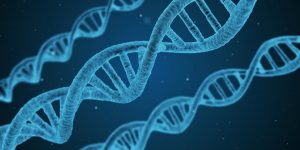Flu season is a dreaded part of every year. The coughs, fevers and bodily pains are intimidating, but so are the flu-caused 3,500 annual Canadian and 250,000-500,000 annual worldwide deaths reported by the Canadian Govt. There are many ways to prevent this, most common being a vaccination. Some people avoid the vaccine due to lack of effort or busy schedules. Still, many people fear the vaccine, believing that the vaccine is ineffective or that it will actually infect you with the flu. What many fear-stricken people don’t know is that neither of these claims are true. The annual flu vaccine effectively works to provide protection against the flu virus, even in ways that many might not know of.

Picture of Vaccination – courtesy of Flickr: https://www.flickr.com/photos/pahowho/13383716683
On the way of vaccination-fear, many people claim the vaccine is ineffective against the winter flu. Now, this does have some truth to it. Doctor Mike, a social media influence who uses his popularity to spread health awareness, explains that the healthcare community must begin preparing vaccines for the September virus in February (as seen in a video below). Predictions on the virus strains (the particular varieties of virus) that will be at large during flu season are released by the World Health Organization around February. Vaccinations are made to counteract predicted viruses, though inaccuracies in predictions and mutations in virus strains can make vaccinations less effective than intended. Nonetheless, the annual vaccine is made to combat a couple of virus strains and can still protect against those strains present in the flu. So, despite the vaccine not being completely effective, it can still be partly-effective, which is important for prevention.
Another factor that prevents many from getting vaccinated is fear of contracting the flu from the vaccine. What these fearful individuals might not know is that this cannot happen. Since an inactive strain is used in the vaccine, “it physically can’t transmit the virus,” as Doctor Mike explains. All the vaccine will do is expose the body to the virus, so it can better equip itself to reacting to it when it possibly sees an active strain next flu season.

Now, while many understand that the vaccine can provide direct immunity, another lesser-known manner of flu-prevention caused by the vaccine is “herd immunity.” This occurs when a substantial portion of the population has been vaccinated and have some immunity to the flu. While the flu can spread from infected carriers, immunized individuals act as blockades. Not only do they not carry the virus, but they will not transmit it either, lessening the likelihood of exposing the flu virus to other individuals who are susceptible. Through herd immunity, not only are vaccinated individuals protected, but many susceptible ones too.
Convinced yet?
All things considered a yearly vaccination to the flu is just as effective as it has long been considered, and not at all as deadly as recently thought. Many rumors about vaccinations run on false ground, and only work through fear of what many don’t know. Being vaccinated provides protection from the flu in more ways than one, and with all the hustle-bustling lives that many of us already deal with, avoiding the flu at the cost of a vaccination should be a no-brainer deal.


